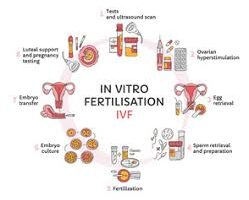In a fast-paced world where convenience matters, hot water dispensers have become an increasingly popular appliance in both homes and workplaces. Whether it’s for making your morning coffee, preparing baby formula, or speeding up meal prep, a hot water dispenser can save valuable time and effort. But with so many models available on the market, how do you choose the right one for your needs?
This article explores the key features to consider when selecting a hot water dispenser, from capacity and temperature control to energy efficiency and design. We’ll also compare different types of dispensers—such as countertop and under-sink models—and highlight their suitability for various household and lifestyle needs.
Capacity: Meeting Daily Demand
Capacity is one of the first factors to consider when choosing a hot water dispenser. It determines how much hot water the unit can provide before needing a refill or reheating cycle.
- Small capacity (1–2 liters): Ideal for personal use or small households.
- Medium capacity (2–4 liters): Suitable for families or shared office spaces.
- Large capacity (5 liters or more): Best for high-demand environments such as large households, offices, or food preparation areas.
If you’re choosing a countertop model, make sure the tank size aligns with your daily usage to avoid frequent refills. For plumbed-in under-sink models, continuous hot water supply is possible, but installation complexity increases.
Temperature Settings: Control and Flexibility
Modern hot water dispensers often come with multiple temperature settings, which is an important feature for those who enjoy different types of beverages or have specific heating requirements.
- Single-temperature models: Deliver boiling or near-boiling water (90–100°C), suitable for most uses.
- Multi-temperature models: Allow users to select from preset options (e.g., 45°C for baby formula, 80°C for green tea, 95°C for coffee), offering more flexibility and safety.
Customizable temperature settings are particularly beneficial for:
- Households with infants or elderly individuals.
- Beverage enthusiasts who want the best flavor extraction.
- Users who need warm water rather than boiling (e.g., for health routines or cleaning).
Energy Efficiency: Saving Power, Reducing Costs
With rising utility bills and growing environmental awareness, energy efficiency is a major consideration for any home appliance. Hot water dispensers vary significantly in how they manage power consumption.
Look for features such as:
- Insulated tanks to retain heat longer.
- Automatic shut-off to prevent energy waste when not in use.
- Eco or sleep modes that reduce power draw during idle periods.
- Instant heating technology that heats only the required amount of water.
While energy-efficient models may have a slightly higher upfront cost, they provide long-term savings and reduce your carbon footprint.
Safety Features: Peace of Mind for Families
Handling hot water comes with risks, especially in homes with children, elderly, or individuals with limited mobility. That’s why safety features should be high on your priority list.
Important safety features to consider include:
- Child safety lock to prevent accidental dispensing.
- Auto shut-off when water runs out or overheating is detected.
- Non-drip or spill-proof spouts to prevent burns.
- Stable, anti-slip base for countertop models.
These features not only protect users from accidents but also improve the appliance’s durability and reliability.
Design and Size: Fitting Your Space
Hot water dispensers come in a range of styles—from compact and minimalistic to more robust and feature-rich. Consider where and how the dispenser will be used to determine the best design.
For small kitchens or limited counter space:
- Compact countertop models are easy to use and store.
- Look for units with a sleek design that complements your décor.
For large households or commercial use:
- Plumbed-in or under-sink models save counter space and provide continuous access to hot water.
Also consider the layout of the dispenser:
- Top-fill designs are convenient for manual refilling.
- Digital displays offer better visibility and control.
- Touch or sensor controls provide a more modern user experience.
Aesthetics may not impact performance, but a well-designed unit can enhance the look and feel of your kitchen or pantry.
Ease of Use and Maintenance
A good hot water dispenser should be easy to operate and maintain. Complicated controls or hard-to-clean components can quickly turn convenience into frustration.
Look for:
- Simple button controls or intuitive touchscreens.
- Removable drip trays for easy cleaning.
- Wide openings for convenient refills.
- Descaling alerts or maintenance indicators.
Models with built-in water filters not only improve water taste but also protect internal components from scale buildup. However, be sure to check how often filters need to be replaced and whether replacements are readily available.
Countertop vs. Under-Sink Dispensers: Which One Is Right for You?
Understanding the differences between countertop and under-sink hot water dispensers is crucial in selecting the right type for your lifestyle and household needs.
Countertop Hot Water Dispensers
Pros:
- Easy to install and move
- Plug-and-play functionality
- Affordable and widely available
- Perfect for renters, small families, or light use
Cons:
- Limited capacity (requires refilling)
- Takes up counter space
Best suited for:
- Individuals or couples
- Office pantries
- Small households
Under-Sink Hot Water Dispensers
Pros:
- Provides continuous hot water (when plumbed in)
- Saves countertop space
- Discreet, built-in design
- Higher capacity and flow rate
Cons:
- Higher installation cost
- Requires plumbing access
- Not portable
Best suited for:
- Large families
- Heavy kitchen use
- Modern homes with integrated appliances
Budget and Long-Term Value
Prices for hot water dispensers can range widely, depending on features, brand, and build quality. It’s important to balance your budget with the functionality you need.
- Entry-level models (basic countertop units) are affordable but may lack customization or energy-saving features.
- Mid-range models often include temperature control, safety locks, and moderate capacity.
- High-end models offer advanced filtration, digital displays, touch controls, and professional-grade components.
Consider the long-term value, not just the upfront cost. Energy savings, maintenance ease, and durability can lead to better returns over time.
Make the Right Choice for Your Needs
A hot water dispenser can significantly enhance your kitchen experience—offering convenience, energy savings, safety, and efficiency. But choosing the right one depends on understanding your unique needs and comparing the features that matter most.
To recap, consider:
- How much hot water you need daily (capacity)
- Whether you want multiple temperature settings
- How energy-efficient the unit is
- The importance of safety for your household
- The space available in your kitchen
- The pros and cons of countertop vs. under-sink models
- Maintenance requirements and long-term cost
By evaluating these features carefully, you’ll be better equipped to choose a hot water dispenser that fits your lifestyle, supports your routines, and adds lasting value to your home.



